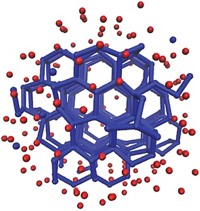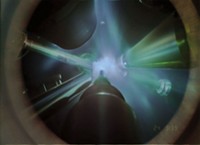Advertisement
Grab your lab coat. Let's get started
Welcome!
Welcome!
Create an account below to get 6 C&EN articles per month, receive newsletters and more - all free.
It seems this is your first time logging in online. Please enter the following information to continue.
As an ACS member you automatically get access to this site. All we need is few more details to create your reading experience.
Not you? Sign in with a different account.
Not you? Sign in with a different account.
ERROR 1
ERROR 1
ERROR 2
ERROR 2
ERROR 2
ERROR 2
ERROR 2
Password and Confirm password must match.
If you have an ACS member number, please enter it here so we can link this account to your membership. (optional)
ERROR 2
ACS values your privacy. By submitting your information, you are gaining access to C&EN and subscribing to our weekly newsletter. We use the information you provide to make your reading experience better, and we will never sell your data to third party members.
Physical Chemistry
In clouds, cubic-structured ice
X-ray scattering studies of water nanodroplets close gap between experiments and simulations
by Jyllian Kemsley
July 24, 2017
| A version of this story appeared in
Volume 95, Issue 30
The phase of ice formed from water droplets in clouds can affect clouds’ vapor content and optical properties. Although ice is most stable when its water molecules arrange through hydrogen bonding into a hexagonal structure, supercooling processes in clouds could allow formation and trapping of metastable structures such as cubic or “stacking disordered” mixtures of hexagonal and cubic layers. New research suggests that ice formed from supercooled water nanodroplets includes more cubic structure than previously determined experimentally, confirming molecular dynamics simulations (J. Phys. Chem. Lett. 2017, DOI: 10.1021/acs.jpclett.7b01142). Barbara E. Wyslouzil of Ohio State University, Claudiu A. Stan of SLAC National Accelerator Laboratory, and their colleagues produced and then froze supercooled water nanodroplets and used wide-angle X-ray scattering to study their structures. The free-electron laser setup at SLAC allowed the researchers to work with smaller droplets and probe the ice structures faster than in previous experiments. The scientists found that the ice crystals’ structure was stacking disordered with 78% cubic structure. Prior studies, which focused on micrometer-sized droplets, indicated that they had about 50% cubic structure, whereas simulations of nanodroplets suggested as much as 70%.




Join the conversation
Contact the reporter
Submit a Letter to the Editor for publication
Engage with us on Twitter